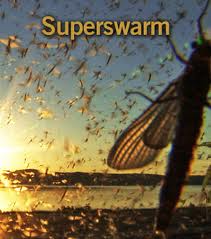
A team of researchers has been investigating how krill form their superswarms–one of the biggest organism gatherings on the planet.
Trillions of juvenile krill gather into superswarms in the oceans of the southern hemisphere. For example, in the Antarctic, the Euphausia superb, a species of krill, forms superswarms that extend for kilometres.
How or why the krill do it, however, remained a mystery until recently. British Antarctic Survey (BAS) scientists, led by Dr Geraint Tarling of Cambridge University, decided to go to the crustaceans’ habitat in an attempt to find out. They went to the Scotia Sea, an area lying between the Antarctic Peninsula and South Georgia, armed with echo-sounding equipment and they studied more than 4500 various krill swarms.
The scientists discovered that krill swarms are of two types: small and large. Adult krill make up the small swarms while the large swarms are made up of juvenile krill.
Small swarms are not very dense (around 10 krill per cubic metre) and measure approximately four metres deep and 50 metres long. Large swarms, or superswarms, can have ten times more krill per cubic metre than the small swarms and measure approximately 30 metres deep and up to many kilometres long.
The researchers also found that large swarms had the tendency to form when less food was available, but exactly why they form them is still unclear. Dr Tarling offered a possible explanation, saying that large swarms protect the individual krill from predators. It also helps them conserve energy, therefore, making the juvenile krill grow faster.
Trillions of juvenile krill gather into superswarms in the oceans of the southern hemisphere. For example, in the Antarctic, the Euphausia superb, a species of krill, forms superswarms that extend for kilometres.
How or why the krill do it, however, remained a mystery until recently. British Antarctic Survey (BAS) scientists, led by Dr Geraint Tarling of Cambridge University, decided to go to the crustaceans’ habitat in an attempt to find out. They went to the Scotia Sea, an area lying between the Antarctic Peninsula and South Georgia, armed with echo-sounding equipment and they studied more than 4500 various krill swarms.
The scientists discovered that krill swarms are of two types: small and large. Adult krill make up the small swarms while the large swarms are made up of juvenile krill.
Small swarms are not very dense (around 10 krill per cubic metre) and measure approximately four metres deep and 50 metres long. Large swarms, or superswarms, can have ten times more krill per cubic metre than the small swarms and measure approximately 30 metres deep and up to many kilometres long.
The researchers also found that large swarms had the tendency to form when less food was available, but exactly why they form them is still unclear. Dr Tarling offered a possible explanation, saying that large swarms protect the individual krill from predators. It also helps them conserve energy, therefore, making the juvenile krill grow faster.
 RSS Feed
RSS Feed